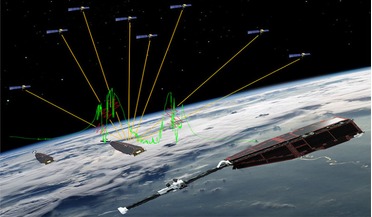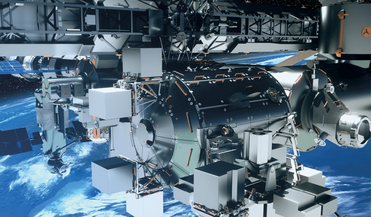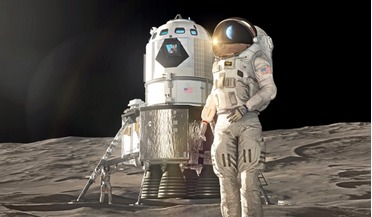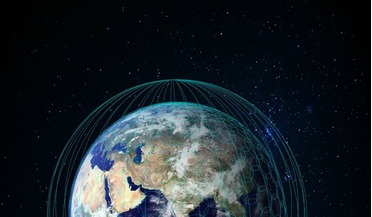 31 October 2016
Swarm constellation helps figure out why satellites lose their GPS signal
31 October 2016
Swarm constellation helps figure out why satellites lose their GPS signal
...ESA – scientists now know why GPS navigation systems on low-orbiting satellites sometimes black out when they fly over the equator...Rapid changes in the ionosphere tend to happen close to Earth’s magnetic equator and typically just for a couple of ...
 September 2017
Engaging the private sector in space exploration
September 2017
Engaging the private sector in space exploration
... initiative is nurturing the gradual establishment of private sector services, led by European companies for low Earth orbit (LEO) exploitation in support of lunar exploration. It aims to strengthen the competitiveness of European industry, stimulate...
 April 2020
Protecting against the dangers of space radiation
April 2020
Protecting against the dangers of space radiation
... the potentially dangerous impacts of radiation. Space radiation is the number one risk to astronaut health on missions beyond low Earth orbit (LEO) and, with a host of long term and deep space missions being actively planned and developed...
 July 2019
Developing life support systems for human exploration missions beyond Earth
July 2019
Developing life support systems for human exploration missions beyond Earth
.... NASA has begun formulating a programme that will build and deploy the world’s first outposts beyond low Earth orbit (LEO). Working with US companies and international partners, the agency is undertaking design work on the systems needed...
 March 2016
Resource Prospector – a Lunar Pathfinder
March 2016
Resource Prospector – a Lunar Pathfinder
... a Faster, ‘Good-enough’, and therefore Cheaper mission. The spacecraft was simple by design and, as a result, was a low-risk approach. Risk tolerance. Another way to save cost is in the risk classification of the mission. NASA carries...
 02 May 2016
OneWeb Seeks Access to US Market.
02 May 2016
OneWeb Seeks Access to US Market.
... Florida, seeks to provide affordable Internet access. The company is building a communications network with a constellation of Low Earth Orbit satellites that will provide connectivity to billions of people around the world. They plan to serve new...